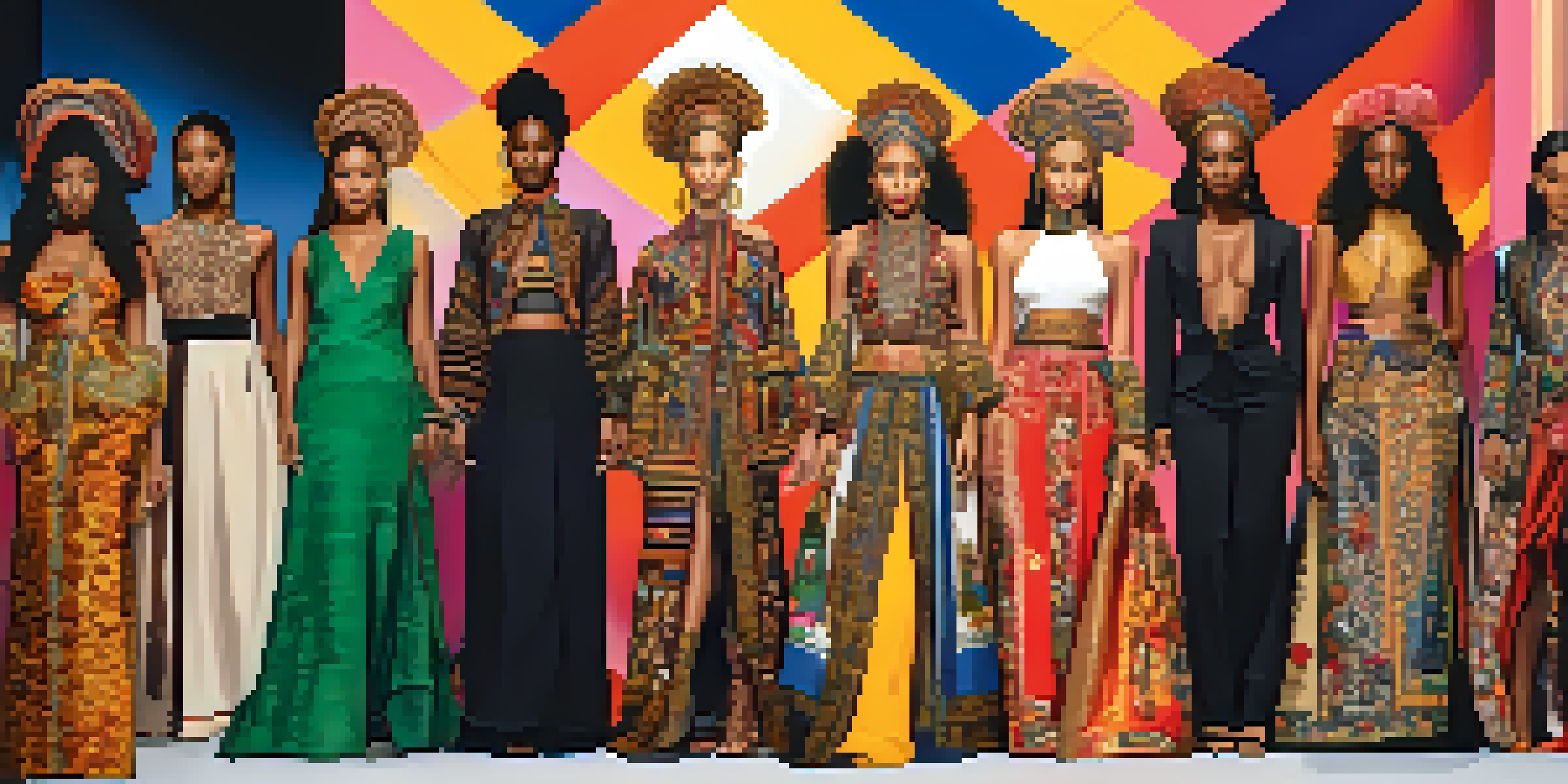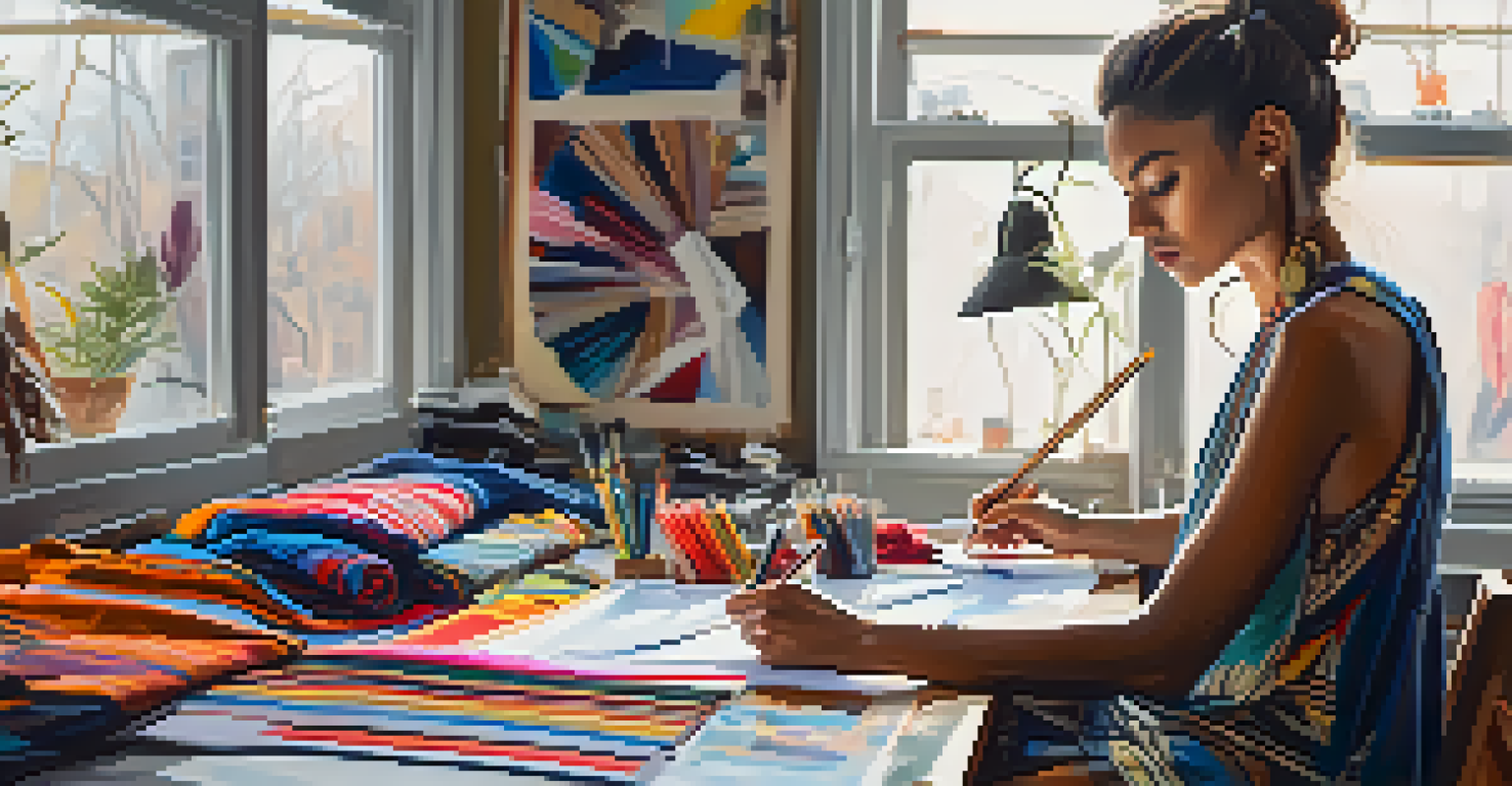The Role of Race in Defining Fashion Trends and Narratives

Understanding the Intersection of Race and Fashion
Fashion is not just about clothing; it reflects cultural identities and histories. Race plays a pivotal role in shaping these identities, influencing what people wear and how they express themselves. Throughout history, various racial and ethnic groups have contributed to fashion trends, making the industry a tapestry of diverse influences.
Fashion is the armor to survive the reality of everyday life.
For instance, think of the vibrant patterns of African textiles or the intricate designs of traditional Asian attire. These elements not only showcase craftsmanship but also tell stories of heritage and community. By embracing these styles, fashion becomes a medium for cultural expression and dialogue.
However, the relationship between race and fashion is complex, often intertwined with issues of appropriation and representation. As we navigate this landscape, it becomes essential to acknowledge and respect the origins of various styles, ensuring that we celebrate rather than exploit cultural narratives.
Fashion Icons: Influencers of Cultural Representation
Fashion icons from various racial backgrounds have significantly influenced trends and narratives. Figures like Naomi Campbell and Rihanna have not only set style standards but have also challenged the industry's norms regarding race and beauty. Their visibility has helped to inspire a more inclusive fashion landscape.

When we think of fashion influencers, it's important to recognize the power they wield in shaping public perceptions. They bring attention to underrepresented communities, showcasing their unique aesthetics and stories. This representation helps to broaden the scope of what is considered fashionable, promoting diversity in an industry that often leans toward homogeneity.
Fashion Reflects Cultural Identities
Fashion is deeply intertwined with race, showcasing diverse cultural histories and promoting dialogue through unique styles.
Moreover, the narratives these icons share can empower individuals within their communities, encouraging self-expression and confidence. By highlighting their journeys, they resonate with many, proving that fashion is a form of storytelling that transcends race and promotes unity.
The Influence of Historical Context on Fashion Trends
Historical events often shape fashion trends, with race playing a crucial role in these developments. For instance, the civil rights movement in the 1960s ignited a wave of cultural pride that influenced clothing styles. This era saw the rise of the Black Panther Party's fashion, which embraced bold colors and political statements.
Diversity is being invited to the party; inclusion is being asked to dance.
Similarly, the Harlem Renaissance brought forth a celebration of African American culture, inspiring artists and designers alike. The flapper style of the 1920s, while initially associated with white women, eventually evolved as Black culture infused its own flair into the trends, highlighting the richness of cross-cultural exchanges.
Understanding these historical contexts allows us to appreciate how fashion evolves over time, often as a response to societal changes. Recognizing the impact of race in these moments can deepen our appreciation for the stories woven into the fabric of fashion.
Cultural Appropriation vs. Cultural Appreciation
The conversation around cultural appropriation versus appreciation is crucial in the fashion industry. Cultural appropriation refers to the unacknowledged or inappropriate adoption of elements from one culture by another, often without respect for their significance. This can lead to the exploitation of marginalized communities and their traditions.
In contrast, cultural appreciation involves a respectful and informed engagement with another culture's elements. It celebrates the nuances and meanings behind styles, fostering understanding and connection. For example, when designers collaborate with artisans from specific cultures, they create a platform for authentic representation and shared storytelling.
Icons Influence Fashion Narratives
Fashion icons from varied backgrounds challenge norms and inspire inclusivity, representing underrepresented communities.
To navigate this delicate balance, fashion enthusiasts must prioritize education and respect. By understanding the origins of styles and giving credit where it's due, we can enjoy the beauty of diverse fashion while honoring its roots.
The Role of Social Media in Shaping Fashion Conversations
Social media has revolutionized how we engage with fashion trends and narratives, especially regarding race. Platforms like Instagram and TikTok allow diverse voices to share their styles and stories, creating a more inclusive dialogue around fashion. This democratization empowers individuals to express themselves authentically and challenge traditional beauty standards.
Additionally, social media serves as a space for activism, where users can call out instances of cultural appropriation or celebrate brands that prioritize diversity. Hashtags like #BlackFashionHistory or #DiversityInFashion highlight the contributions of various racial groups, fostering a sense of community and awareness.
Through these platforms, fashion enthusiasts can connect, learn, and grow together. The ability to amplify marginalized voices ensures that the conversation around race in fashion continues to evolve, making it more dynamic and representative of our global society.
Emerging Designers: Redefining Fashion Narratives
Emerging designers from diverse racial backgrounds are redefining fashion narratives and challenging conventional aesthetics. Their unique perspectives and experiences infuse fresh ideas into the industry, often reflecting their cultural heritage. This innovation can lead to the creation of trends that resonate on a deeper level with audiences.
For example, designers like Kerby Jean-Raymond and Christopher John Rogers draw inspiration from their backgrounds, creating collections that not only showcase style but also tell powerful stories. Their work often addresses social issues, encouraging conversations around race and identity within the fashion sphere.
Cultural Respect is Essential
Distinguishing between cultural appropriation and appreciation is crucial for honoring the roots and significance of fashion styles.
By supporting these designers, consumers can contribute to a more equitable fashion landscape. As we embrace their narratives, we enrich the industry and encourage a more diverse representation of beauty and creativity.
Fashion's Future: Embracing Diversity and Inclusion
As we look toward the future of fashion, embracing diversity and inclusion will be paramount. The industry must continue to evolve, ensuring that all voices are heard and represented. This means not only featuring diverse models on runways but also including a variety of perspectives in design teams and brand leadership.
Moreover, consumers are increasingly demanding brands that reflect their values, pushing for transparency and accountability in how fashion is produced and marketed. This shift can lead to a more ethical approach that honors the contributions of different cultures.

Ultimately, the future of fashion lies in collaboration and respect. By celebrating the richness of diverse narratives, we can create a more vibrant and inclusive industry that resonates with everyone, regardless of their background.